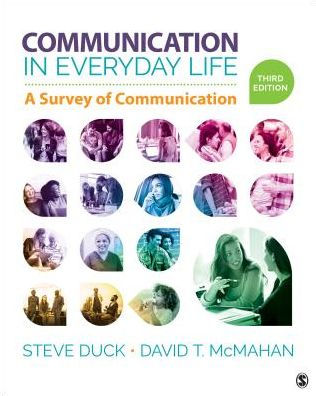Communication in Everyday Life: A Survey of Communication / Edition 3 available in Paperback

Communication in Everyday Life: A Survey of Communication / Edition 3
- ISBN-10:
- 150631516X
- ISBN-13:
- 9781506315164
- Pub. Date:
- 01/24/2017
- Publisher:
- SAGE Publications
- ISBN-10:
- 150631516X
- ISBN-13:
- 9781506315164
- Pub. Date:
- 01/24/2017
- Publisher:
- SAGE Publications

Communication in Everyday Life: A Survey of Communication / Edition 3
Buy New
$38.91Buy Used
$24.15
-
SHIP THIS ITEM— Not Eligible for Free Shipping$24.15
-
SHIP THIS ITEM
Temporarily Out of Stock Online
Please check back later for updated availability.
-
Overview

Product Details
| ISBN-13: | 9781506315164 |
|---|---|
| Publisher: | SAGE Publications |
| Publication date: | 01/24/2017 |
| Edition description: | Third Edition |
| Pages: | 392 |
| Product dimensions: | 8.00(w) x 10.00(h) x (d) |
About the Author
David T. Mc Mahan received his Ph.D. from the University of Iowa in 2001. With research focusing on the social aspects of media and technology, personal relationships, and rhetorical criticism, he is the author of multiple books, and his research and scholarship have been published in numerous academic journals and edited volumes. He was named a Centennial Scholar by the Eastern Communication Association. David has taught courses that span the discipline of communication, including numerous courses in interpersonal communication and personal relationships, media and technology, communication education, theory, and criticism. He has been honored to receive multiple awards for his work in the classroom. A tremendously active member of the discipline, David’s his extensive record of service includes President of the Central States Communication Association, Editor of the Iowa Journal of Communication, and Consulting Editor of the Journal of Communication Pedagogy, along with membership and activity on a vast number of academic committees, executive boards, and editorial boards. He will serve as President of the National Communication Association in 2021. David hopes to one day have the winning entry in the Super Bull competition at the Iowa State Fair.
